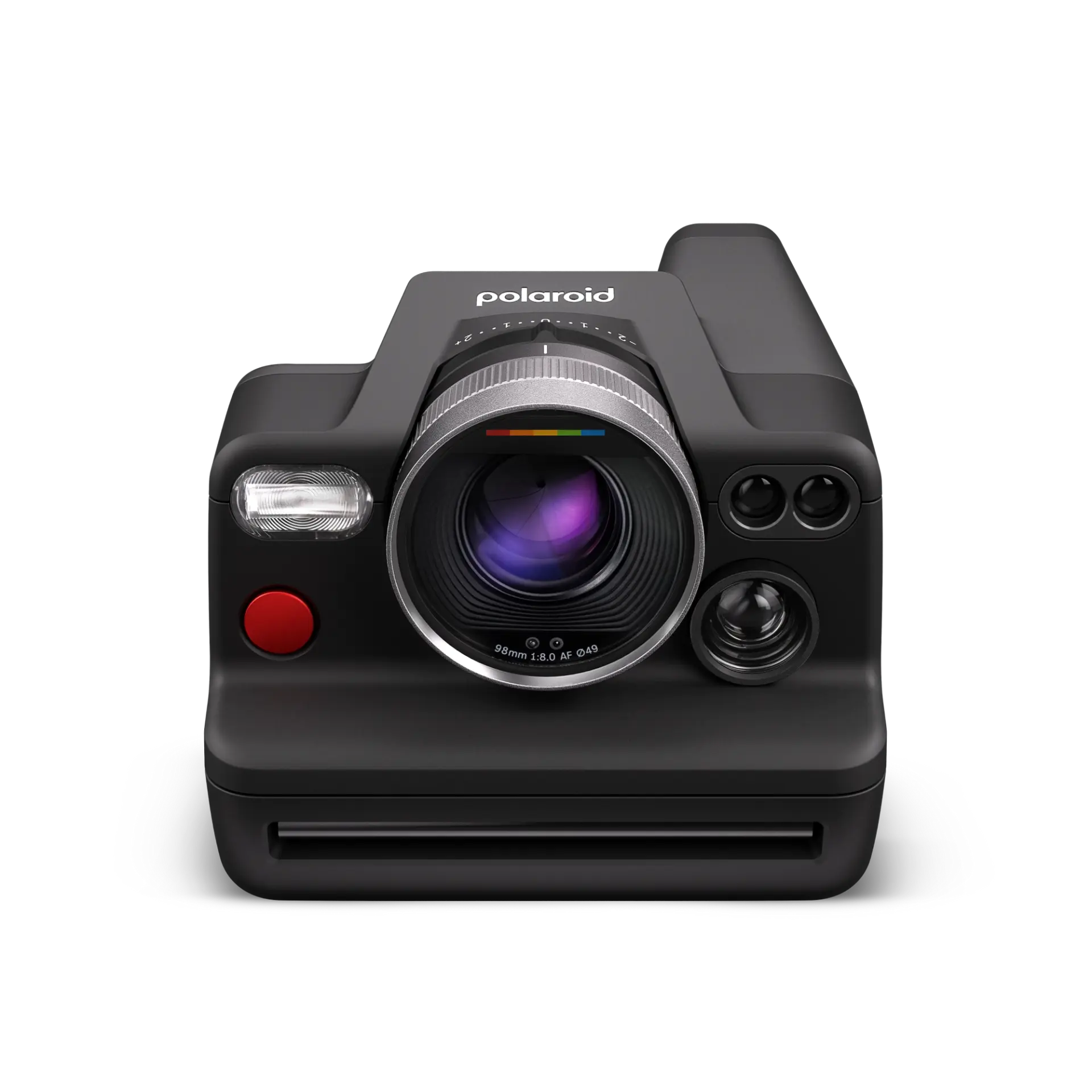The Polaroid I-2 is the first analog instant camera with built-in manual controls. Paired with the sharpest-ever Polaroid lens and a unique chemistry of Polaroid film, and you have an instant craft tool made for the tactile, creative pursuit of analog photography.
The I-2 measures at 3.6 x 4.7 x 5.9 inches and weighs about 1.2 pounds. The camera body is mostly plastic (with some metal elements) and has a matte-gray finish. It’s not cheap plastic, however, and the finish makes for an attractive camera. It also feels sturdier than the plastic Polaroid bodies from the 80s and 90s.
The camera is as comfortable to hold as other Polaroid cameras, which is to say it’s a little bit bulky and awkward. I keep three fingers under the camera and my right index finger over the shutter release on the front, which leaves my thumb to rest on the rear info display. To help keep the camera steady when the viewfinder is at eye level, I use my left hand to support it.
The shutter release uses a typical two-stage design. Half-press the red button to engage and set autofocus, and push it in all the way to fire off a photo. Two control rings surround the lens: One dials in EV compensation (from -2 to +2 EV in third stops) and the other sets the aperture or shutter speed.
The I-2 has a monochrome information display on the rear, that is visible in bright sunlight even. It shows the exposure mode (Auto, Aperture, Shutter, Manual, Multi-Exposure, or Self-Timer), aperture, shutter speed, battery level, and number of photos remaining in a loaded film pack. The Multi-Exposure mode lets you put two, three, or four exposures into one frame.
The I-2 also works with external flashes at up to 1/250-second sync speeds, though not via a typical hot shoe interface. Instead, it has a 2.5mm sync port to connect directly to an external strobe or wireless trigger via a cable.
The OVF has a dedicated exposure information display as well, just below the image area. The orange-tinted LCD shows the EV compensation, as well as the metered exposure value, the number of shots left in the film pack, the battery life, and the flash status full-time. It also shows the set autofocus distance and an AE-L indicator when you half-press the shutter.
Its 98mm F8 focal length covers a wide standard angle of view, about 40mm in full-frame terms. The aperture goes down to as small as f/64 in full-stop settings (f/8, f/11, f/16, f/22, f/32, f/45, f/64), and its integral leaf shutter ranges from 30 seconds to 1/250-second. Remember that Polaroid 600/I-Type film is rated at ISO 640, so you likely need to add a neutral density filter to use it wide open in bright light. The lens blurs backgrounds at wide settings, with a depth of field that is similar to an f/2.8 lens on full-frame, so I recommend picking up a 49mm 3-stop ND filter to get that look on sunny days.
The lens is autofocus only. If you prefer manual focus, this camera isn’t for you. The focus area is marked in the center of the viewfinder, and the information display shows the detected distance (in meters) for a bit of support. The camera focuses quite close for an instant camera, to 0.4 meters.
The autofocus system improves picture quality too. The I-2 locks focus with stunning precision across its range (0.4m to infinity). It makes for a crisper image than plastic-lens cameras with one or two zones of focus like the Instax Square SQ1 or even glass-lens models that rely on manual scale focus like the Lomo Instax Square.
The meter does a really good job. Reflective meters work well, but back-lit scenes and frames that cover deep shadows and bright highlights tend to stumble. It’s worthwhile to measure a scene with your phone or a hand held light meter.
The I-2 supports I-Type, 600 Series, and SX-70 film.
Costs aside, Polaroid film’s picture quality is inconsistent and requires some care to use properly. This is especially true with the colour materials, which tend to produce under-saturated images with a very slight brown colour cast on warm days and a blueish tint in colder weather, along with some contrast loss if you don’t shield the film from light as it develops.
Pros:
Full manual exposure control
Crisp lens with close focus
Precise LiDAR autofocus
Large, bright viewfinder
Works with external flashes
USB-C charging port
Bluetooth remote via smartphone app
Cons:
Polaroid film is expensive and tricky to use
1/250-second shutter is limiting in bright light
No manual focus
Tripod release plates may block film door
Now available for special order at Beau Photo for $799.99
My sample photos down below.

I-2 at a nightclub

DrivebyBologna

My dog Yuki (Snow in Japanese)

My good friend Noah aka (Zeissoflife)

Seoul Society

Boris Strong

mahalo

In Cosplay




